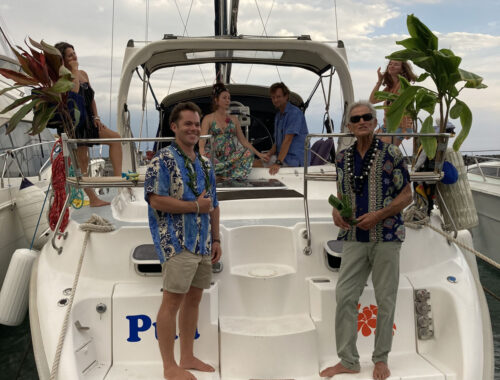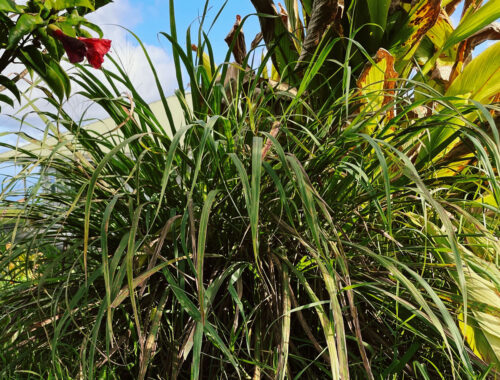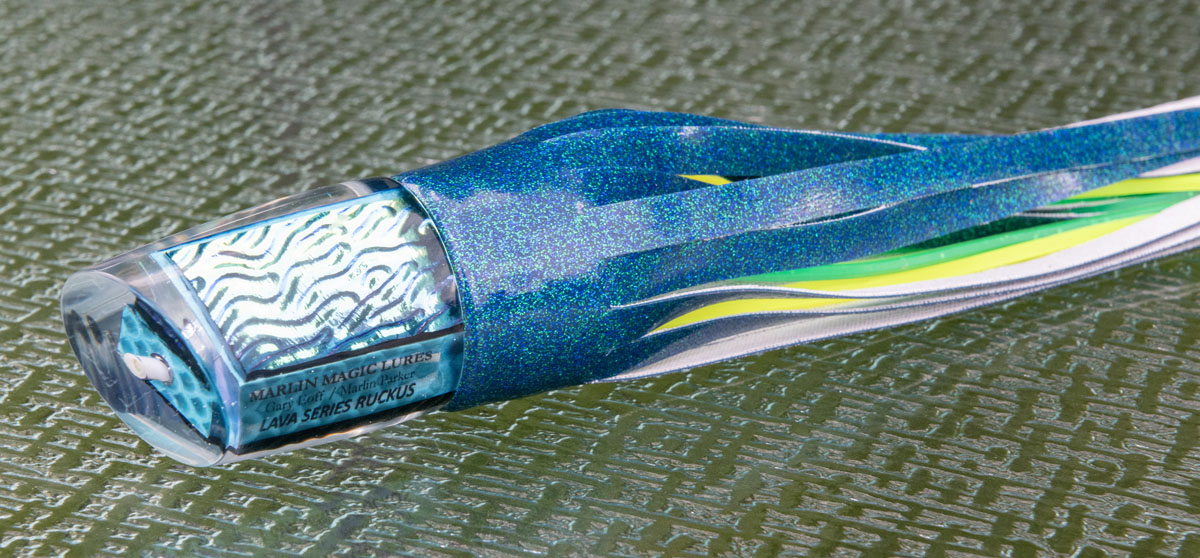
Beauty and the Beasts: The Art and Craft of Hawai‘i’s Big Game Lures

By Jim Harrold
If you ever venture on a Kona sportfishing charter, you’ll likely note that the fanciful handcrafted lures trolled behind the boat don’t look anything like common bait for ono, mahimahi, ahi, and marlin. The colorful lure heads, with their large eyes and fluttering skirts, their sparkles and mother of pearl accents, seem more like creatures from another planet than ‘ōpelu, aku, mālolo, and squid—favorite fare of big game fish. Yet, they catch!
These same lures also attract fishermen, those wanting to buy and drag such eye-catching creations in the hope of hooking the biggest fish of their life. What many don’t realize is that the impressive cottage industry of engineering and crafting successful big game lures began on Hawai‘i Island decades ago. In fact, charter captains from around the world, from Cape Verde to Cabo San Lucas, to Florida and Australia, would all agree that the island’s influence and leading role has never waned. If anything, it continues to grow.
The Way It Was
For centuries, fishermen of the Pacific islands fashioned bone, shell, wood, and olonā (plant fiber) into functional hooks and primitive line for catching large ocean fish. In Hawai‘i, local fisherman paddled their canoes to promising near-shore spots to drop a stone. Using this ancient method, they’d wrap fish chunks, a baited hook, and a stone with a large leaf. The hand line connected to the hook would have a few wraps around the assembly. After lowering the assembly over the side and dropping it to the desired depth, they’d yank on the line to release the stone and allow the ground fish chunks and baited hook to attract a passing hungry tuna or other fish.
Over time, however, with the influence of nonnative peoples and the advances of the modern age, methods for catching fish grew and improved exponentially. Motorboats entered the scene, allowing fisherman to patrol large swaths of ocean. Geared fishing reels, factory-made fishing line, and stainless steel hooks significantly raised catch rates. Add to this the introduction of big game fishing lures.
Enter the Game Changers
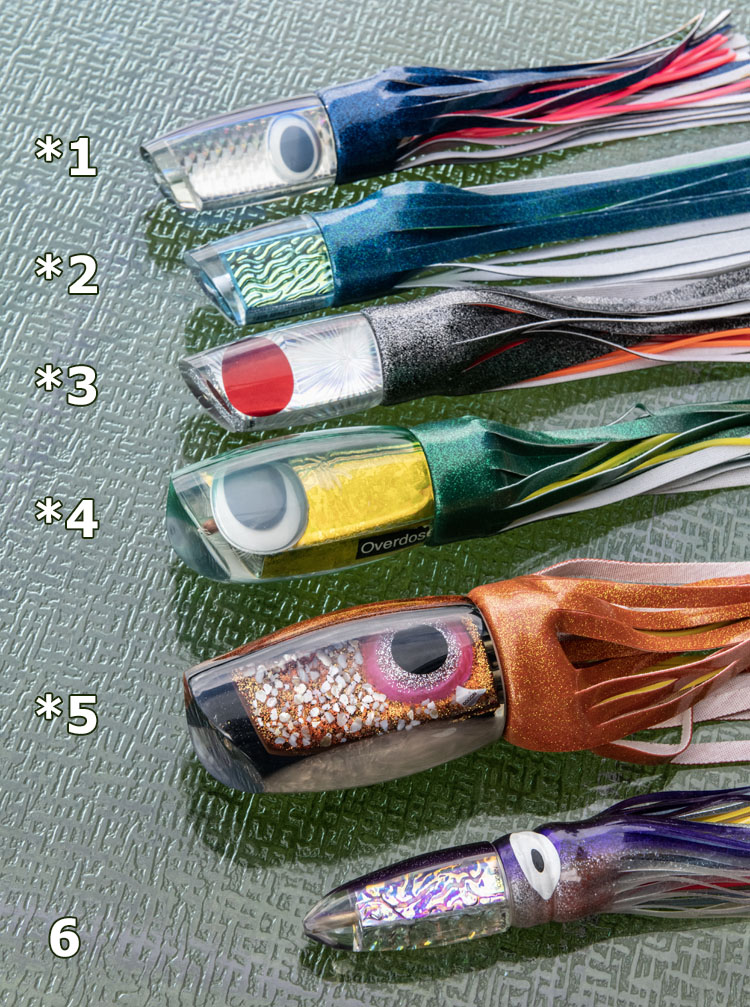
The first generation of lure trollers pulled lures that ranged from large wooden plugs with dangling hooks to scoop-faced and feathered lead heads. While bait fishing remained the dominant and preferred means to reel in pelagic fish, Kona charter fisherman Captain George Parker, in 1945, changed that—almost by accident. Always experimenting, as lure makers do, George created a basic cylindrical trolling plug using dowel rod and chrome towel bar pipe salvaged from a Kona Inn remodeling project. To add excitement and stability, he skirted the assembly’s trailing end with innertube rubber sliced into strips and pieces of oil cloth. He ran leader line through a centered hole drilled in the dowel’s length and buried the attached hooks in the skirt. During the lure’s initial fishing trip, George landed a 500-plus pound marlin, the first of many monsters to gobble up his handiwork.
With the basic cylindrical tube shape established, another Kona fisherman and boat captain, Henry Chee, stumbled upon a material that would send big game lure making in an entirely new direction. His secret sauce? Plastic, the very two-part resin used to make fiberglass boats. When he saw how the mixed liquid hardened and assumed the shape of whatever container that held it (shot glasses included, the shape of Chee’s early lure creations), the proverbial lightbulb flicked on. Not only did this propel Henry’s future in the world of lure making, but it sparked inspiration across the islands and beyond. In turn, it led to the casting of lures through two-part molds containing an endless variety of cavities that promised to yield winning lure shapes. With the lure head polished and completed, installing skirts and a hook or two transitioned the shop-made creation into a functional fish slayer.
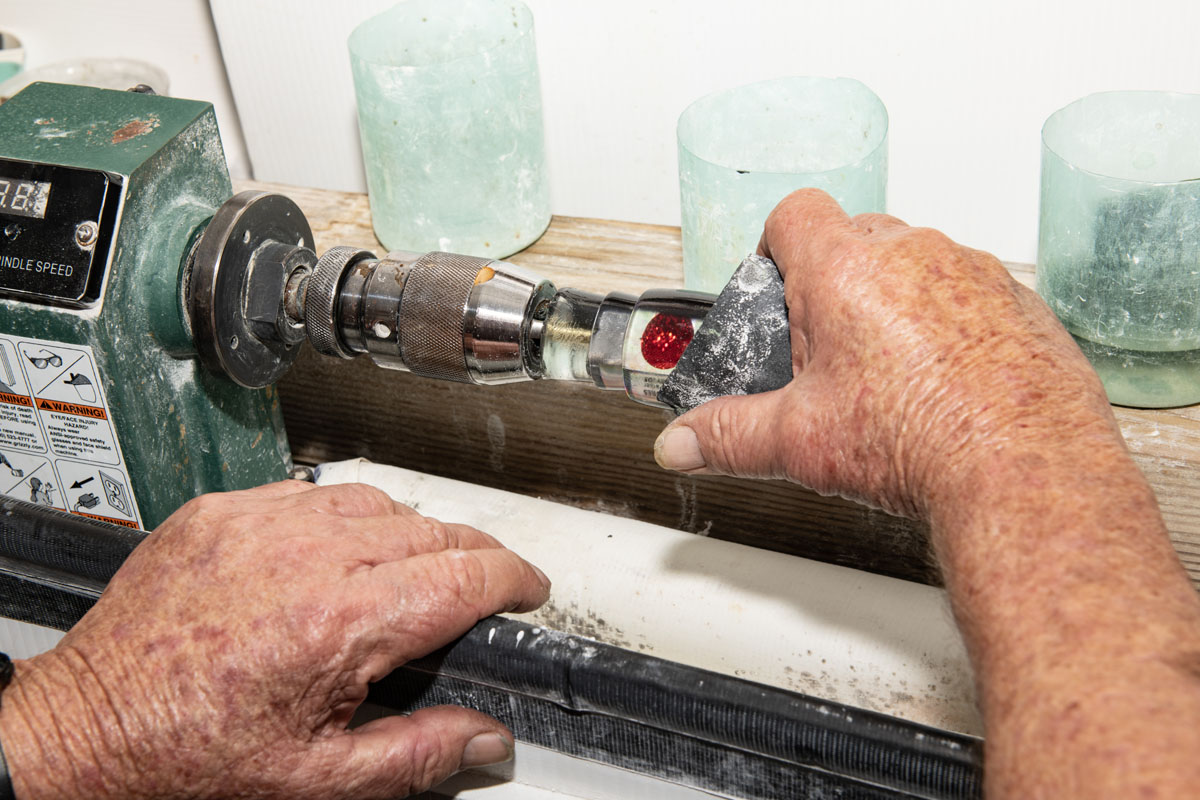
From Mold to Fish Catcher
Gary Eoff, an internationally known Kona lure maker with more than 42 years of experience, breaks down the making of a big game lure head into four steps. He’ll tell you, however, that the complete process demands more than 100 steps, plus a full shop with several unique workstations.
Step 1 Gary first fashions an insert of poured lead and brass leader tube, then dresses it with mother of pearl veneer and stick-on eyes.
Step 2 He places the insert in a two-part silicon mold having a lure-shaped cavity. This he fills with plastic resin and sets it aside.
Step 3 Once the lure head hardens, Gary secures it in a mini lathe and smooths the surface with wet/dry sandpaper, graduating to 1,000 grit.
Step 4 He achieves the final glassy finish at the coarse and fine buffing wheels using a buffing compound.
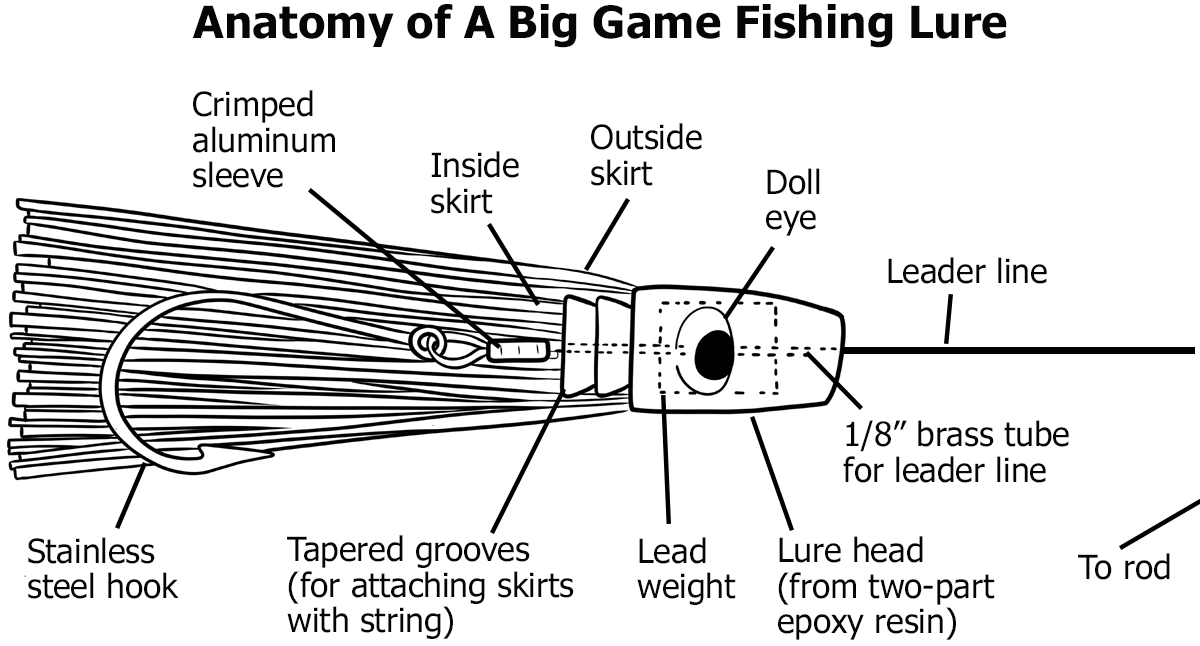
Big-Time, Big Game Lures
While big game lures evolved in subtle ways, the hard plastic models handcrafted locally and statewide enjoy international fame and show up in all the major tournaments, including the island’s Firecracker Open, the Hawaiian International Billfish Tournament, and Hawai‘i’s Lure Maker’s Challenge. Naming the entire pantheon of legendary lure makers and showing their work far exceeds the scope here. Still, the following list of successful big game lure styles and lure makers pictured in the photo on page 16 represent some of the very best:
- Super Plunger by Joe Yee, Honolulu
- Marlin Magic (blue dichroic glass) Ruckus by Marlin Parker and Gary Eoff, Kailua-Kona
- Medium Poi Dog plunger by Eric Koyanagi, Hōlualoa
- Green and Yellow Magilla scooped-face plunger by Bomboy Llanes, Kailua-Kona
- Tada scooped-face and jetted plunger with shell chips and gold and silver glitter by Steve Coggin, Hawai‘i and Southern California
- Bullet (dichroic glass) by Steve Coggin
Note that local charter and tournament captains follow a catch-and-release policy aimed at sustaining the ocean’s marlin population.
Did You Know…
- In 1954, Captain George Parker of Kailua-Kona caught the first blue marlin grander in Hawaiian waters with one of his legendary handcrafted Parker lures. (A grander fish weighs more than 1,000 pounds.)
- The largest marlin ever cranked in on rod and reel was off O‘ahu in 1970. It tipped the scales at 1,805 pounds. Cornelius Choy set the hook using a George Lum lure with a fish head design.
- Eighty percent of strikes in ocean waters come from pelagic fish snapping at lures; however, only 20 percent of these result in happy endings for the fisherman as many fish escape.
- Big game lures by famous makers Henry Chee and Joe Yee can set you back over $500 per masterpiece.
- According to lure and fishing expert Jim Rizzuto, Joe Yee’s Super Plunger holds the record for catching the most granders.
Special Thanks to
- Lures courtesy of: Big Game Lures Hawaii and Pacific Rim Fishing
- Consultant/lure maker: Gary Eoff
All photos courtesy of Tom Carey

